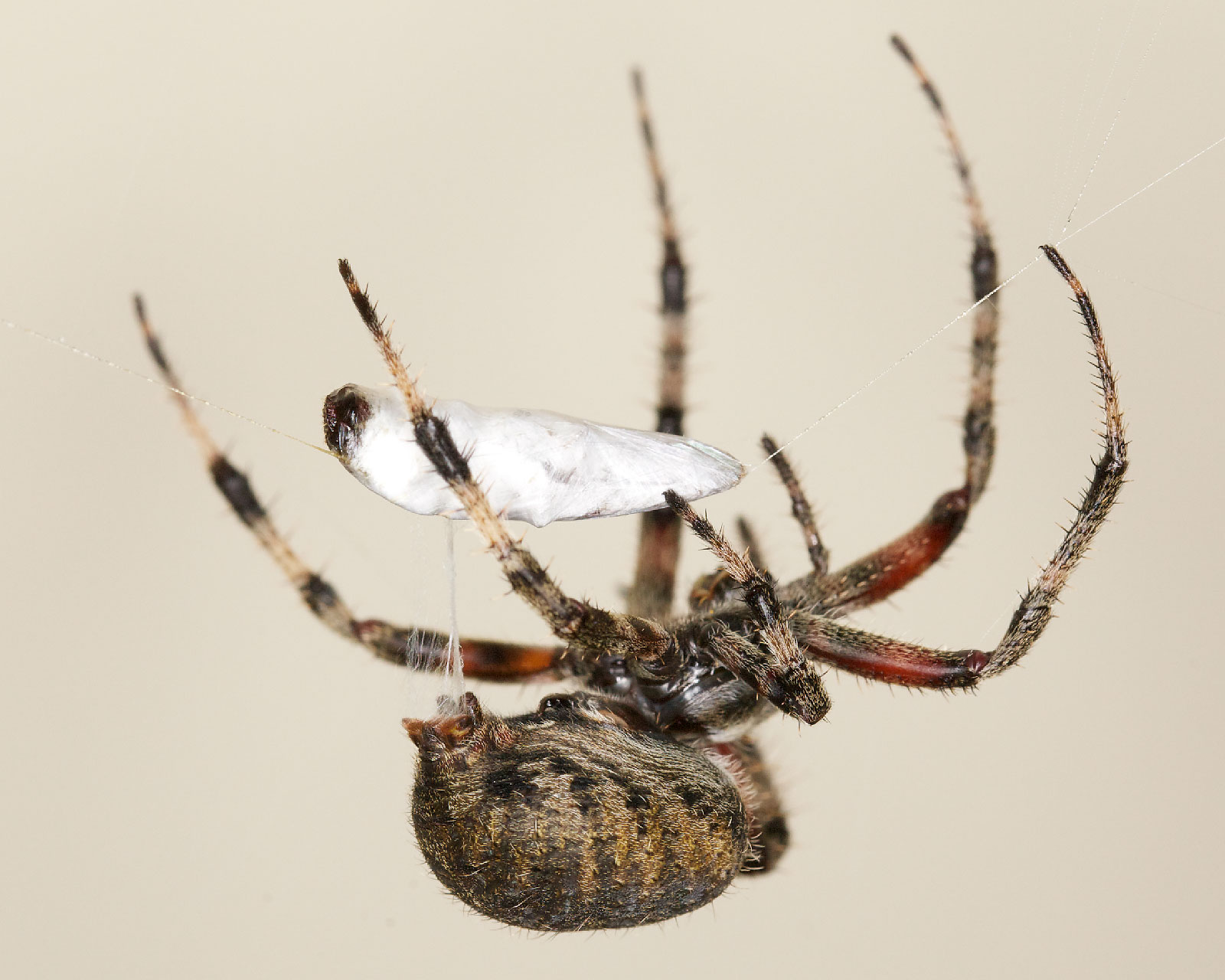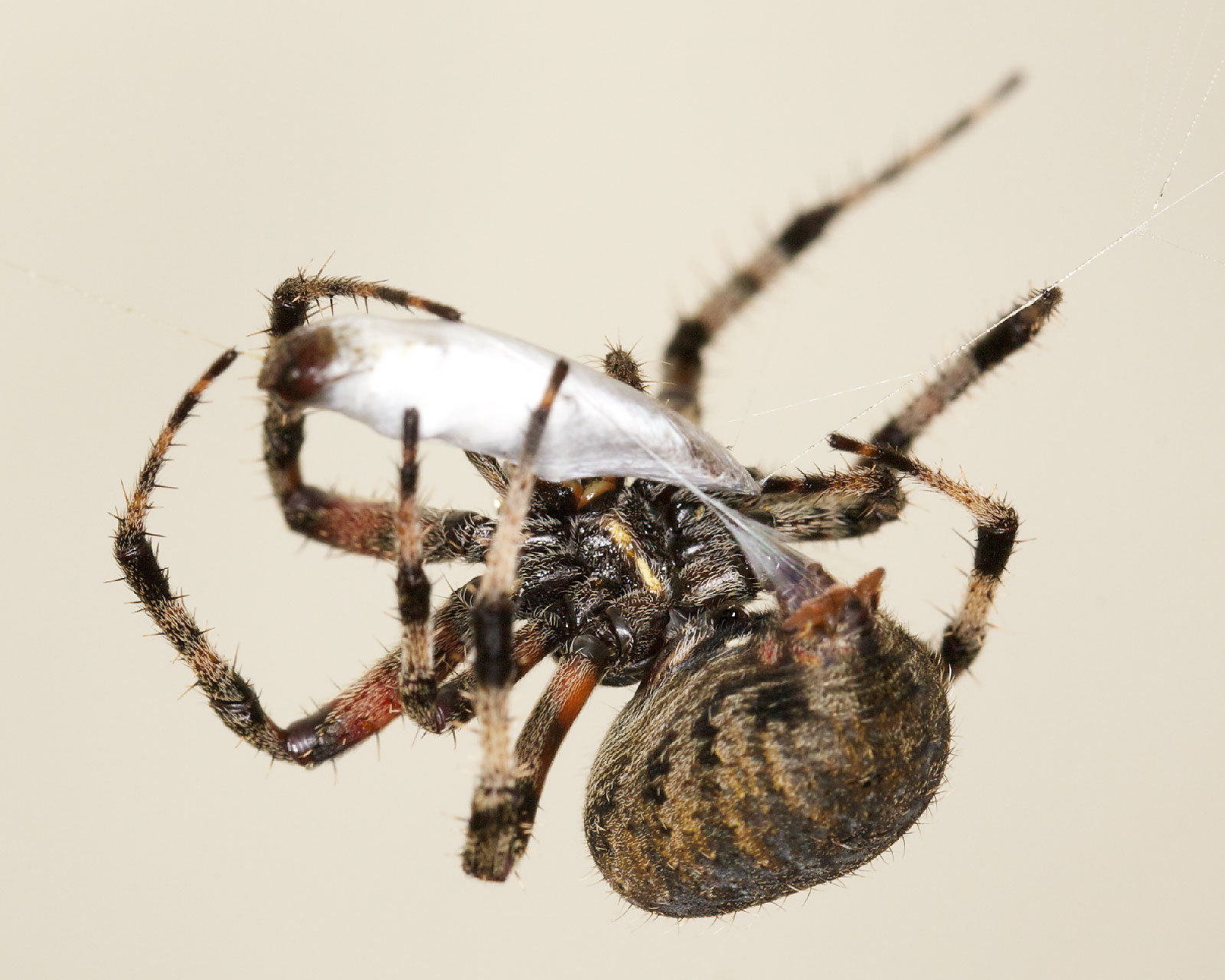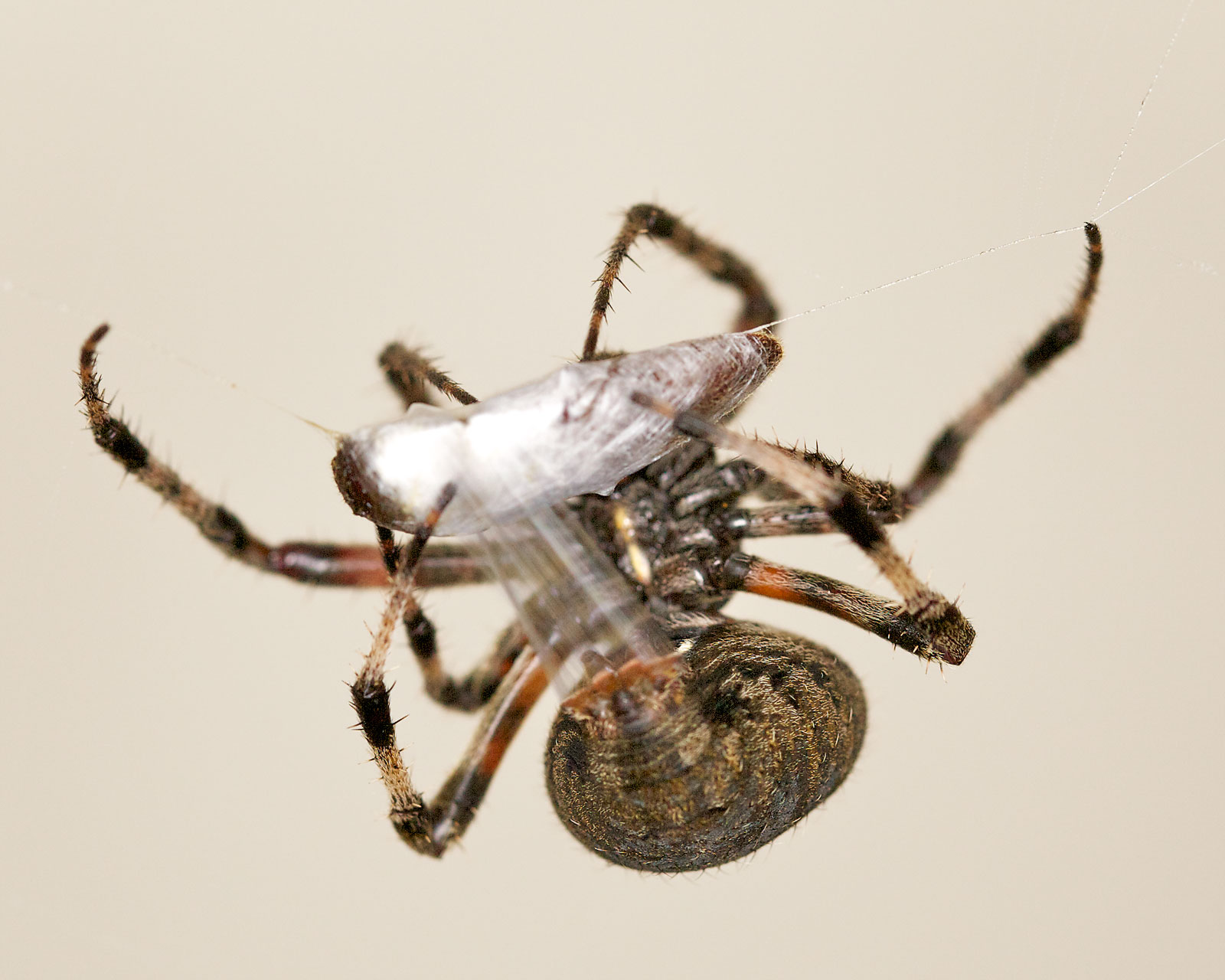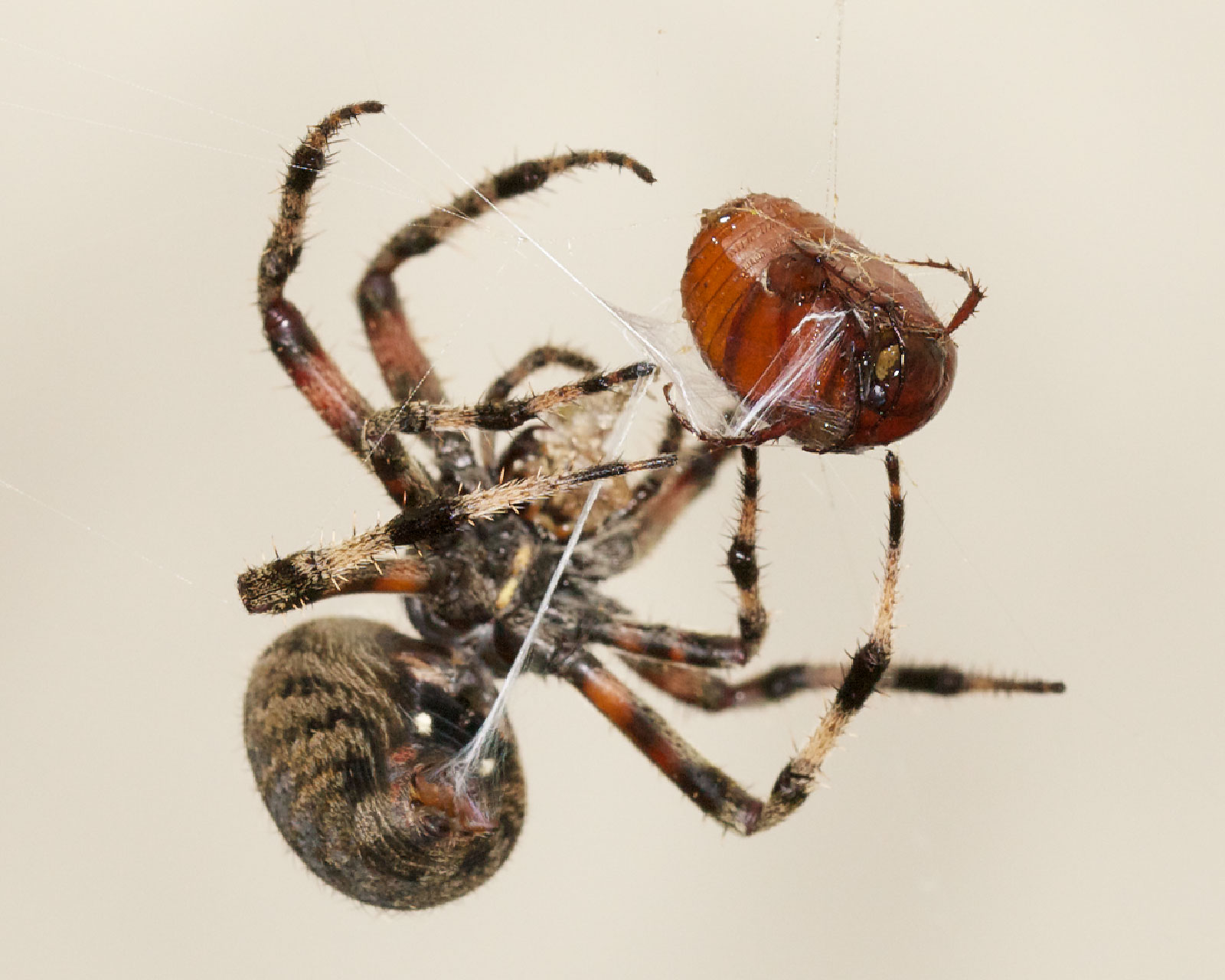Kit: Canon 5D Mark II with Canon 100mm macro lens and Canon Macro Ring Lite. Made with the assistance of my intrepid wife and arachnid wrangler, Leona.
As of June, 2013, nine of the photographs of Neoscona crucifera at the Encyclopedia of Life site are mine.
Neoscona crucifera would be unlikely to bite a human unless very strongly provoked. I have poked them with my finger to try to make them assume a different pose for photography. Sometimes they stood their ground in seeming defiance, sometimes they fled, but they did not attempt to bite me. Even if you were able to persuade this species bite you, the bite would almost certainly be harmless. (There is nothing in this world that I can guarantee to be harmless to you.) There are very few spiders whose bites are potentially harmful to humans, and there are none that seek out humans in order to bite them*. The most dangerous animal in the world is not a spider, it is anopheles gambiae.
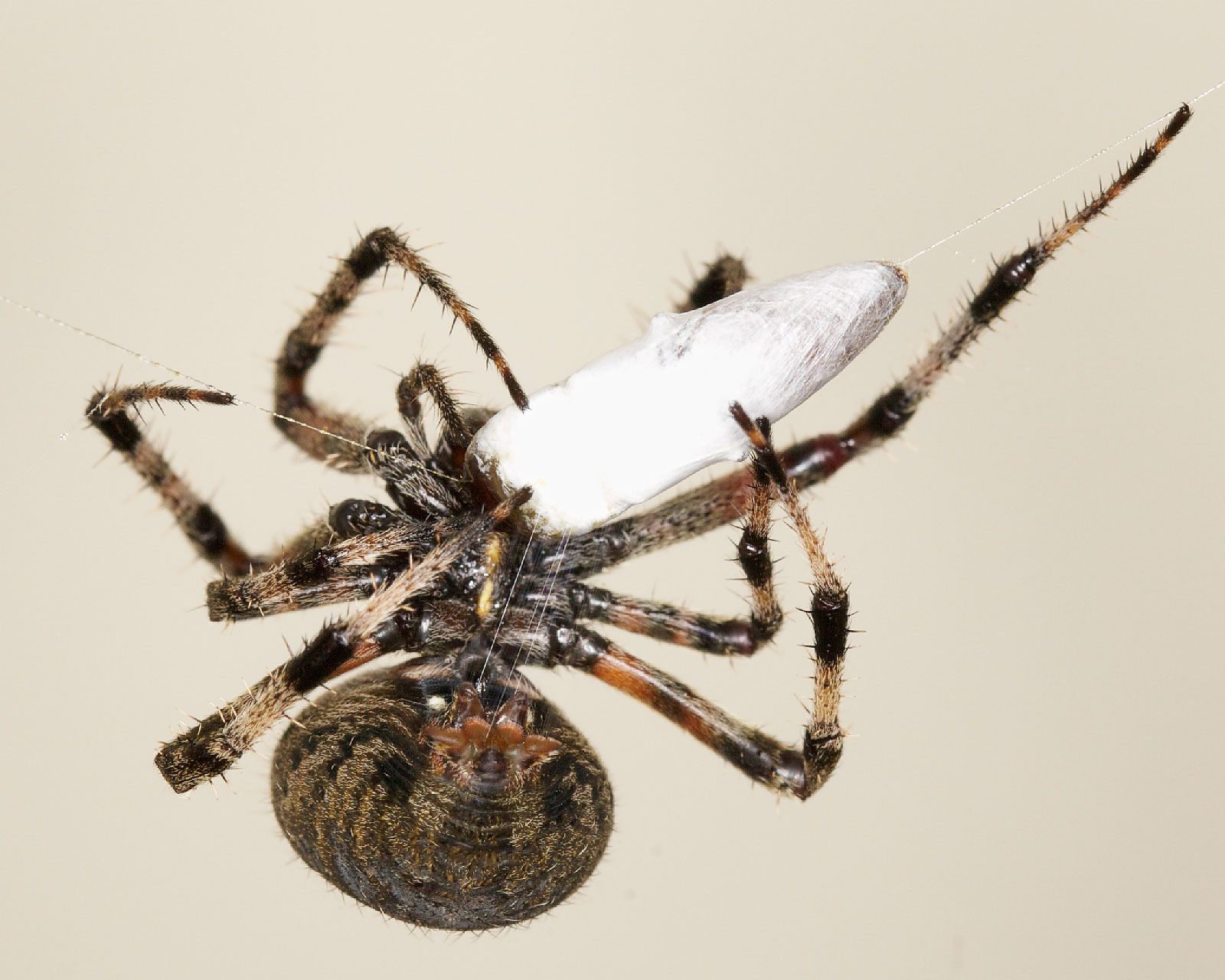
| This illustrates in detail—perhaps more detail than you ever wanted to see—how the spider wraps its prey. This small moth was caught in the web just moments before. The spider detected the moth’s presence by sensing the movement of the web rather than by sight (it was dark, after 9:00 p.m. EST). The spider moved quickly to bite the moth and paralyze it (but not kill it) with venom. In a matter of seconds the spider was wrapping the moth. The five photographs on this page all depict silk issuing from Neoscona crucifera’s spinnerets in both strands (as above) and sheets. The last photo on this page is a different bit of prey, a small June beetle that the spider captured immediately after wrapping the moth. The first two photos, immediately above and below this text, illustrate how the spider handles the prey. The spider first applies several tightly wound filamets of silk to the front of the prey's head and the tip of its abdomen. The photos show that this silk is thicker than the silk issuing from the spinnerets. The spider uses the strong, heavy silk as one might use a spit for meat—it can rotate the prey it. The spider is also grasping these heavy strands with two of its tarsal claws. The spider appears to be using four of its eight legs to grasp its web and stabilize itself while the other four legs are being used to spin the prey and manipulate the silk. |
